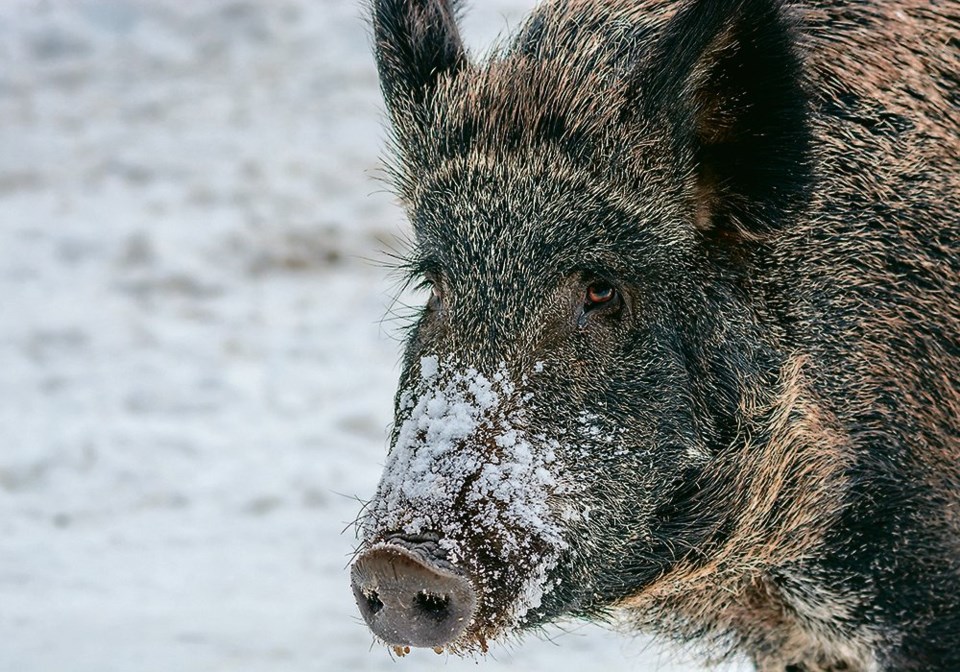WESTERN PRODUCER — Animal Health Canada is consulting on a draft strategy to control invasive wild pigs given the numerous threats the animals pose.
“Wild pigs are a clear example of a One Health issue, affecting animal, human and environmental health,” said the organization in a news release. “Wild pigs cause significant damage to natural ecosystems and agricultural land; they carry diseases that are infectious to wildlife, domestic animals and people; and their presence in urban settings can lead to human injuries (motor vehicle accidents and attacks).”
The looming threat is African swine fever, a virus that threatens the global pork industry and for which wild pigs have been a vector in other countries. It hasn’t been found in Canada and AHC and other stakeholders would like to keep it that way. The draft strategy is part of the Pan-Canadian African Swine Fever Action Plan.
Dr. Christa Arsenault, who until late last month was the ASF national project manager at AHC, said the strategy is intended to increase understanding of the problem, educate people on best management practices, co-ordinate efforts across regions and track progress. The first action will be to establish a leadership group to carry out the strategy and secure funding to keep it going.
“Canada is heavily reliant on our export markets for pigs,” she said. “This strategy demonstrates to our international trading partners the actions being taken to minimize the risks invasive wild pigs pose. “
The draft document has been disseminated throughout the industry, government and academia for input and feedback before the final document is complete.
Invasive wild pigs are described as any domesticated pig, Eurasian wild boar or hybrid that has escaped or been released from a property and is roaming freely.
Arsenault said the size of the wild pig population in Canada is unknown, but populations are established in the four western provinces.
Modelling in the United States has found a population can double in five years. Control efforts and damages cost that country more than $1.5 billion annually, the strategy said.
“Some jurisdictions have attempted to control wild pigs by expanding sport hunting. While increasing hunting opportunities would seem to be a logical method to decrease wild pig populations its effect is the opposite. Wild pigs exposed to hunting pressures are likely to move into new areas and learn to evade humans,” it said.
One of the strategy actions is to establish a Canadian network of professional trappers and hunters who could then train others to help in the eradication effort.
Wild pigs aren’t just a rural problem, as they have been found in urban areas where they seek out food from landfills.
“This year-round food source results in increased pig size, population growth and incidence of wild pig vehicle collisions,” says the strategy document. “While these instances are considered rare, when they do occur the consequences can be severe.”
Testing of wild pigs has been limited, but they can host more than 30 viral and bacterial diseases and 37 species of parasites.
Sightings should be reported to www.cwhc-rcsf.ca/invasive_pigs.php.

